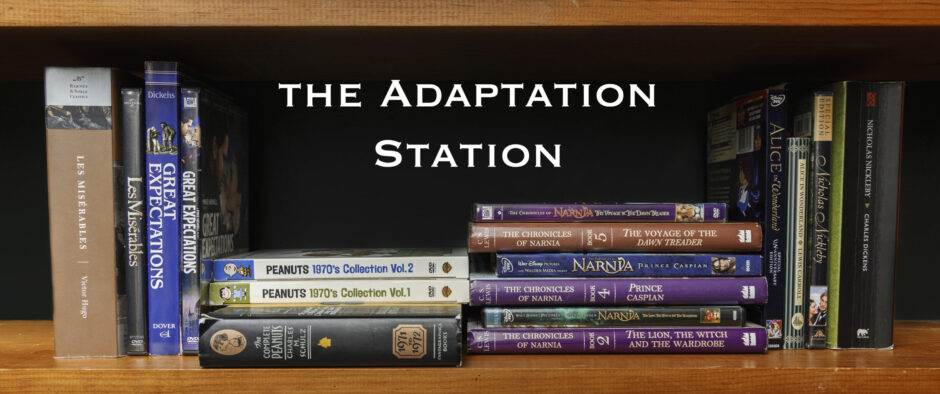Many eyebrows were raised when it was first announced that Disney would be doing a movie adaptation of the 1987 stage musical Into the Woods. Dark, cynical, adult deconstructions of fairy tales are kind of the opposite of what we associate with that company. On the other hand, adaptations that dilute the dark, disturbing or kid-inappropriate elements of their source materials are associated with them and the fact that the movie aimed for and achieved a PG rating than a PG-13 seemed to confirm theater fans’ skepticism. But while director Rob Marshall and others involved in the production admitted that the movie would tone down some of the play’s edgiest aspects, they assured fans it would maintain the main ones and the heart of the piece. Predictably, the resulting film that came out in 2014 doesn’t really have a clear audience, being too racy, depressing and morally messy for many parents to feel comfortable sharing with their kids and too sanitized and compromised to please diehard lovers of the original musical.[1]To its credit, the marketing campaign didn’t try to deceive family audiences quite as much as it could have tried. The second trailer all but states that adultery will figure into the plot. In … Continue reading
It’d be easy to dismiss the cinematic Into the Woods as an example of trying to please everyone and pleasing no one, but that’s not my goal here. I want to write about it because…well, I feel like I’m the only one who can review it from a neutral standpoint. On the one hand, I don’t love the stage play. I mean, I like it. Well, it’d be more accurate to say that I respect it. I find the show’s humor to be fun but not hilarious, though it can be with a great cast. I find the songs by Stephen Sondheim to be OK but not great. (Sondheim’s work in general does little for me.) I find the story to be clever, but I don’t love it. I don’t think it’s because I can’t enjoy dark or depressing stories. Les Misérables, for example is a musical I love. But I don’t care for ones where the whole point is just to say, “life stinks.” Neither am I a fan of stories that are full of characters who get killed off willy-nilly without satisfying ends to their arcs. Of course, people die in real life without “satisfying ends to their character arcs” and Into the Woods is all about the differences between stories and real life, so that’s appropriate. But it doesn’t mean I have to enjoy it. I even disagree with the musical’s message that it’s impossible to say what’s right or wrong. I mean, sometimes it may be, but in my experience, when people say that it’s hard to know the right thing to do, what’s usually going on is they know the right thing and don’t want to do it. (It’s important to note though that there are other messages in Into the Woods that I can get behind.) Truth be told, the main reason I keep returning to this play is my interest in fairy tales and most of the fairy tale-inspired musicals that I really like are family friendly Disney-type ones.
On the other hand, I’m someone who is frustrated by bad adaptations in general, even if they aren’t necessarily of things I love. My heart goes out to fans of Into the Woods who were denied a faithful take on it. It also goes out to the creators who had to compromise their artistic vision for the sake of marketability. And as someone who loves fairy tales, it’s kind of depressing to me that movies of them are only seen as marketable to children.[2]Then again, I can remember being disappointed as a kid whenever there was a fairy tale adaptation that was too adult in content for me to watch, so I guess I can see both sides.
On a third hand, I imagine that even if the movie were aiming for a PG-13 rating, which is what it probably should have done, major changes would still have to be made to the material. That’s because the original Into the Woods is written in a very theatrical way with characters singing about unstageable scenes we never actually see. It marks the passage of time by having each member of the cast march on stage whenever a day has ended and give some kind of maxim that sums up what they’ve learned recently. (“Sometimes the things you most wish for are not to be touched,” “Opportunity is not a lengthy visitor,” etc.) You could, I suppose, do that in a movie with a montage of the characters randomly looking into the camera and speaking but I’d advise against it. I don’t mean to criticize playwright James Lapine or composer/lyricist Sondheim for that. They were making a stage play after all. Why not do things you could only do in a stage play? Still, I don’t consider Into the Woods a naturally cinematic musical like Les Misérables, especially since it relies for its full effect on a two-act structure with an intermission in the middle and Hollywood isn’t in the business of making movies over two and a half hours nowadays unless they’re part of a lucrative franchise.
Enough preliminaries. I’d better summarize the movie’s premise for the uninitiated.
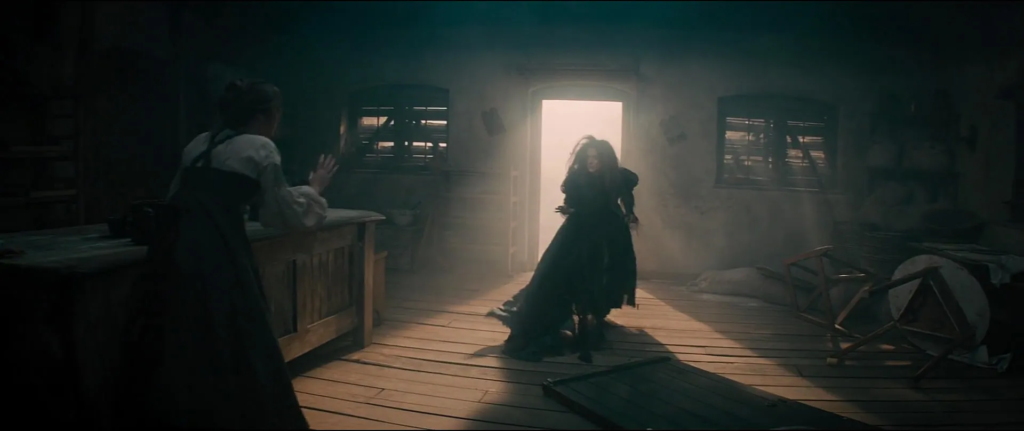
In a village at the edge of a wood, an ugly old witch (Meryl Streep) curses the local baker (James Corden) and his wife (Emily Blunt) with infertility because of something the baker’s father (Simon Russell Beale) stole from her long ago. She promises to lift the curse if they help her collect ingredients for a potion in three days’ time. These four ingredients are “the cow as white as milk, the cape as red as blood, the hair as yellow as corn, the slipper as pure as gold.” To find them, the baker and his wife must go…into the woods. In the same neighborhood, the familiar stories of Cinderella (Anna Kendrick), Jack (Daniel Huttlestone) of beanstalk fame, Little Red Riding Hood (Lila Crawford)[3]The dialogue never identifies her by name but she’s obviously Little Red Riding Hood. and Rapunzel (Mackenzie Mauzy) are taking place simultaneously. Well, Cinderella’s story is less familiar than the others since it’s the version by the Brothers Grimm rather than the iconic Charles Perrault one. I feel the need to mention that so viewers don’t get confused. Anyway, the opening song establishing this complex setup is the musical’s catchiest and makes for probably my favorite scene in the movie. From reading that list of ingredients, you can probably guess how the baker and his wife will interact with each famous fairy tale figure.
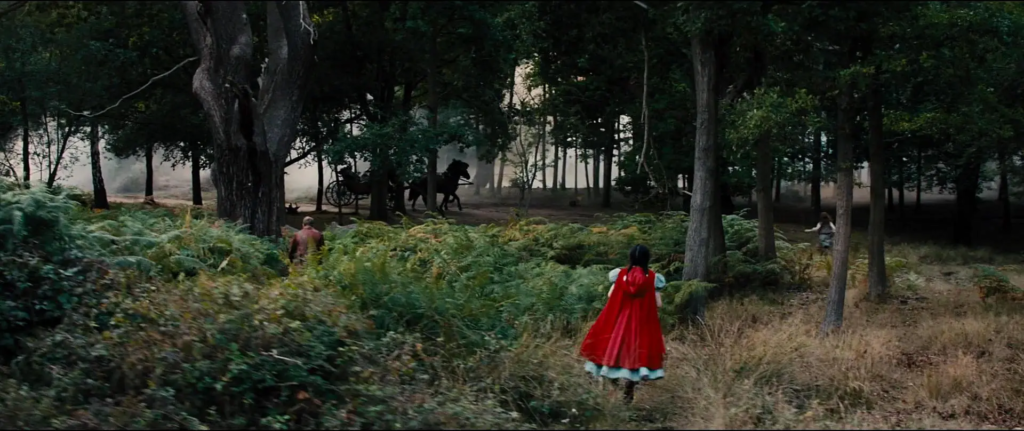
Where does the dark deconstruction part come into play? Well, to explain that, I’m going to have to get into spoilers, though I’ll try to keep some things vague. Those who don’t want a first viewing experience spoiled should skip to the last couple paragraphs of this post. Suffice to say that most of the characters are stuck in terrible situations and their desperation to get out of them leads them to do immoral or at least unwise things. As the traditional fairy tale endings play themselves out, it seems like those compromises were worth it. But then they come back to bite everyone in the butt as the story goes “off book.”
Let’s start off with some bad stuff. Even as a casual fan of the play at most, I take some issues with how James Lapine adapts his own script in this movie. Some of them may be nitpicky but nits have a way of adding up. Changing the opening narration’s description of Jack from “a sad young lad” to “a carefree young lad” makes no sense when the whole song is about how he, like the other characters, is discontented with his life. The final verbal exchange between Little Red Riding Hood and Jack, which was one of the funniest and most heartwarming moments in the play, is cut for time. I’m fine with the decision to cut the character of Cinderella’s father. You could argue it’s an example of softening the material as it means she’s no longer abused by her blood relatives, but while the father can provide some amusing comedy onstage with his air of drunken indifference to everything, he didn’t really contribute to the plot.[4]Most Cinderella adaptations cut the character for the same reason. However, this means a crucial line from Cinderella late in the movie makes less sense. “My father’s house was a nightmare,” she says. Shouldn’t she call it her stepmother’s house? I also approve of cutting the subplot of the mysterious old man who helps the baker during the first act, but I don’t understand why the movie drops the mystery of why the witch is using the baker and his wife to help her make her potion, having her clearly explain it early on. The viewer knowing this means losing a plot twist. I also don’t understand why the movie, more or less, gives away in her first scene just why the witch holds such a grudge against the baker’s father, eliminating another plot twist. I guess these changes fit in with how the adaptation seeks to have us sympathize more with the witch from the start. Having her slowly become more sympathetic as the story proceeds seems to affirm her misanthropic worldview[5]Though the cautiously optimistic ending suggests humanity can learn from its mistakes-future generations of it anyway. made more sense if you ask me.
But the movie’s biggest asset isn’t the writing. It’s the cast. I’d honestly say that I prefer watching this Into the Woods to the 1991 filmed version with the original Broadway cast even though the latter represents the creators’ uncompromised artistic vision and is probably more thematically coherent. There are only a couple of actors in it whom I really enjoy watching. I find it jarring how their performances go from broadly caricatured in the first act to deadly serious in the second. I suppose this was to make the contrast between the two halves as striking as possible, but it doesn’t work for me. After all, it’s not like there’s no real drama in the first act, inherent in the traditional fairy tales and the original story of the baker and his wife, or no moments of humor in the second. The cast of the 2014 Into the Woods finds a perfect balance between the comedic and the dramatic. The only performance I really prefer from the 1991 version is that of Bernadette Peters as the witch with her ability to make every line of dialogue memorable. Of course, many people would credit Meryl Streep with that gift too and she definitely comes across as having fun as the witch. Maybe too much fun actually. To my way of thinking, she’s a bit too gleeful and doesn’t convey her character’s bitterness enough. Still, she’s fun to watch and some of her sad line readings can break your heart.
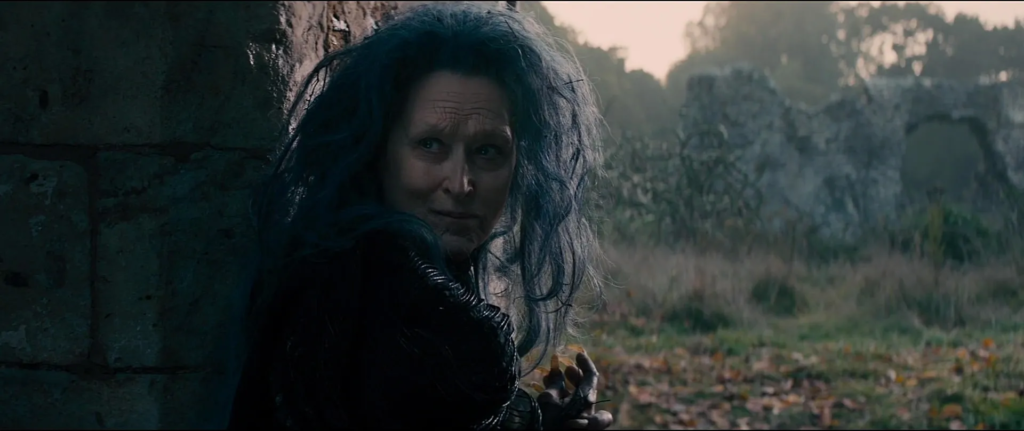
I know James Corden has become something of a pariah but he’s great as the baker in both the comedic moments and the dramatic moments. 1991’s Chip Zien comes across as wooden by comparison. Emily Blunt is also perfectly cast as the baker’s wife. (I don’t think praising her is controversial.) I wouldn’t say she’s as much of an improvement over Joanna Gleason as Corden is over Zien but that’s because Gleason was better than Zien, not because Blunt is at all inferior to Corden. The two of them even make their big duet, It Takes Two, which I’d previously thought one of the musical’s most boring songs, memorable. While the couple’s relationship isn’t without problems in the movie, they don’t fight as much as in the play. That’s another example of Disneyfication, I suppose, but the film does draw the advantages that come with making the leads pleasanter, mainly it being easy to root for them.
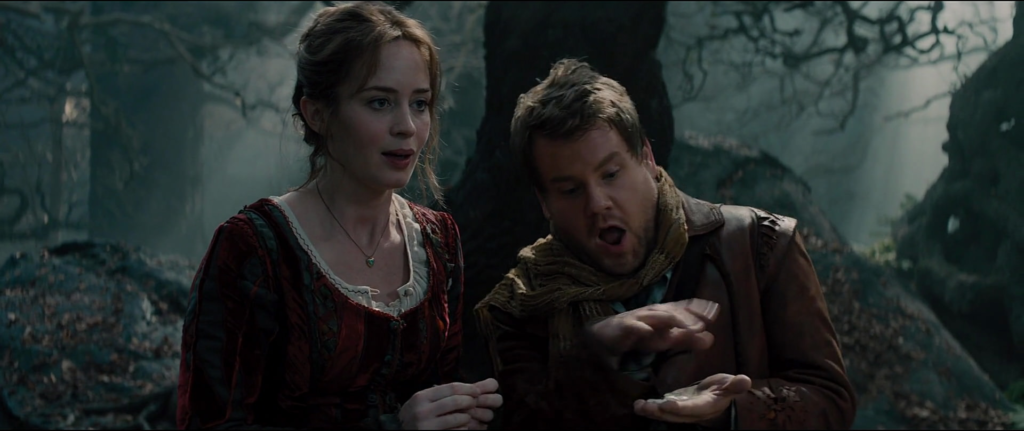
Even bigger improvements over the original Broadway cast are Chris Pine and Billy Magnussen as the two princes who are supposed to symbolize (male) celebrities who can charm any woman they want though they’re really jerks.[6]They also symbolize people who always want what they can’t have. Robert Westenberg and Chuck Wagner were too obviously arrogant and not heartthrobby enough to really convey this in my opinion. Watching Pine and Magnussen though, it’s easy to imagine women overlooking their characters’ faults.
Of course, Rapunzel’s prince doesn’t have quite as many faults as in the original play. From what we see, his feelings for Rapunzel go deeper and he ultimately comes across as a vain but loveable himbo (cf. his counterpart in Disney’s Enchanted.) This makes the story’s themes less consistent, but I’d argue it also makes its allegory for life more nuanced than in the original where all romantic relationships and nearly all parent-child relationships end in some kind of tragedy. After all, while every marriage doesn’t turn out as happily as in the stereotypical fairy tale ending, neither is each one a mistake. And Magnussen makes his goofy character so endearing I can’t bring myself to wish he were a cad.
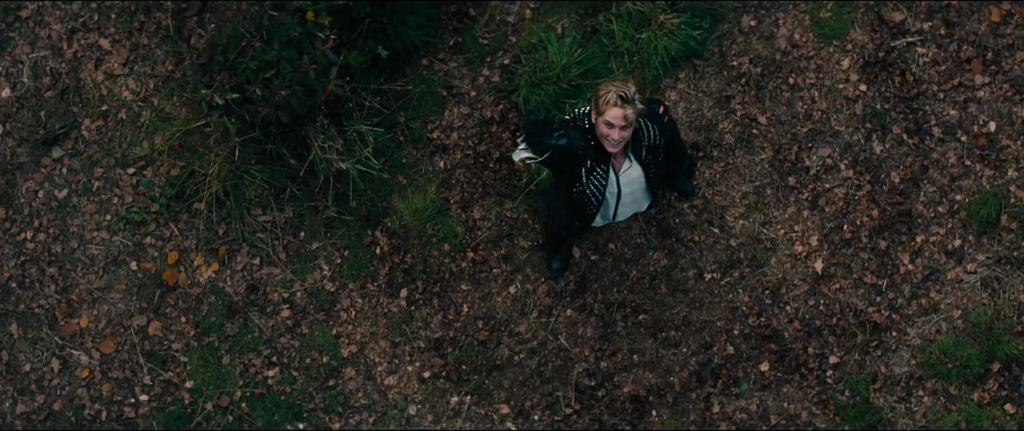
I do wish Cinderella’s prince weren’t so obviously menacing in his initial pursuit of her as it makes his later caddishness less of a twist and the eventual dissolution of their relationship less sad.[7]The compressed time frame also does that though that feels like a side effect of not being able to make a three-hour movie rather than a goal of the filmmakers. Arguably, that’s another example of softening the original play’s edge. I blame the direction though and not Pine who’s perfectly cast.
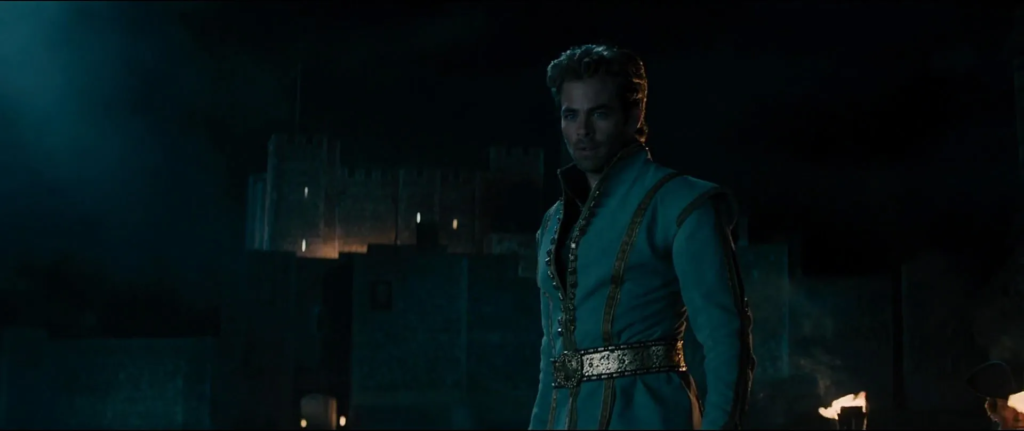
The movie takes advantage of lip synching in the princes’ song, Agony, having the actors do ridiculously over the top physical performances they couldn’t do while singing live and making the scene far funnier than it could ever be on stage.
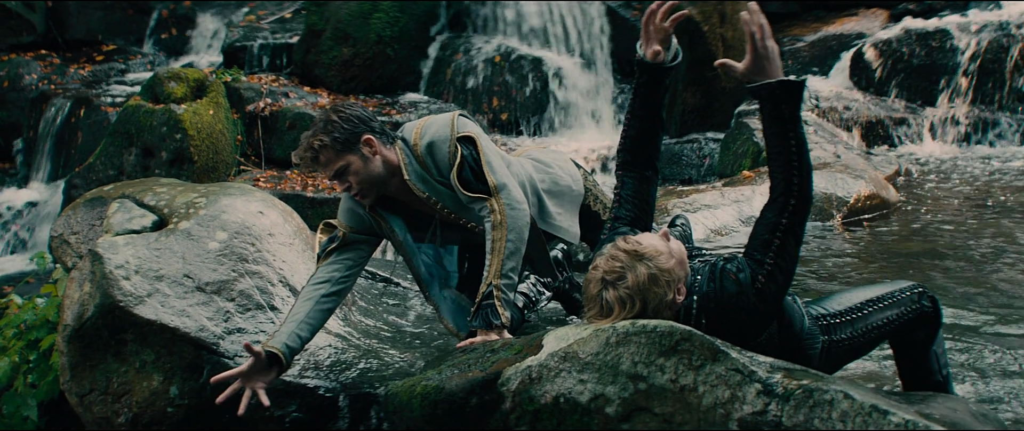
Although Daniel Huttlestone had a role in the 2012 Les Misérables, one of my favorite movies, I didn’t praise his performance much when writing about it since he was portraying a relatively minor character and I had so much to say about everything. He was great in it though and he’s also great here as Jack. The character is portrayed as less of a dolt than in the play, which pays off dramatically, making it easier to get invested in him.
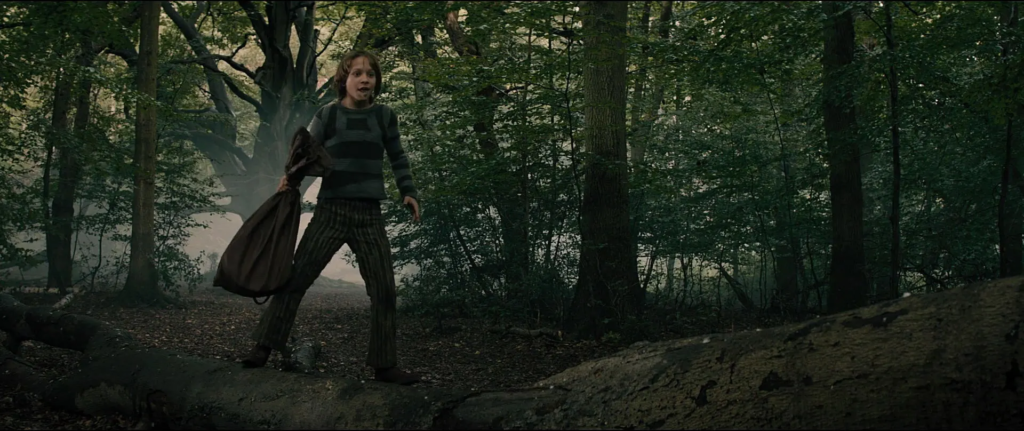
Despite Rapunzel’s story being less tragic here than in the original play, Mackenzie Mauzy also plays her less for laughs than many stage actresses do. She’s great in the role. The bit where Rapunzel, torn between her mother figure and her lover, breaks down crying during the witch’s angry musical plea, Stay With Me, is a highlight.
Rapunzel is the one character who dies in the play but doesn’t die in the movie. This was a mistake in my opinion as it makes the threat in the second half less threatening. And while I may feel that Rapunzel was just killed off in the play because the playwright couldn’t think of what else to do with her character, that’s arguably better than just not doing anything with her. If the movie absolutely had to have a PG rating, I’d have suggested keeping the violent death but having it be offscreen[8]The film does the same thing with another character’s death. The dialogue is weirdly inconsistent here, using euphemisms for death is some scenes and throwing the word around casually in others. with the characters coming across Rapunzel’s body after the fact.[9]As the prince is a sympathetic character who really loves Rapunzel in this version, such a scene could have been even sadder than the one in the play where it was only the witch who really mourned … Continue reading Still, while the character’s fate may be considerably softened, the movie is generally true enough to the spirit of the stage play that I think we can safely assume she’ll always suffer from trauma.
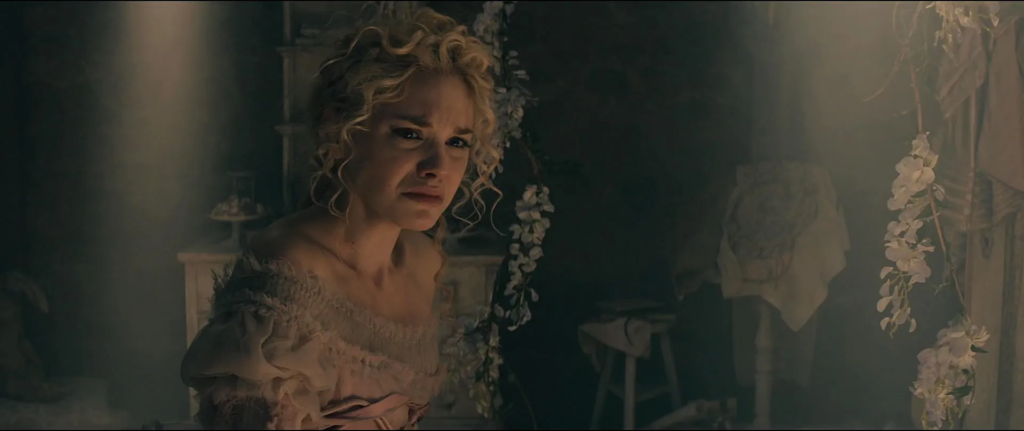
I love it when even the actors playing the supporting characters in a movie or play are great and the 2014 Into the Woods is definitely a case in point. Christine Baranski, Tammy Blanchard and Lucy Punch are hilarious as Cinderella’s stepmother and stepsisters.[10]Punch has played versions of Cinderella’s stepsister twice before. It’s kind of her thing. The scene where the former chops off parts of the latter’s feet so they can fit the slipper is a highlight. (Remember what I mentioned about this being based on the Grimm version rather than the iconic Perrault one?) The camera doesn’t actually show that act of violence unlike in the play but onstage it’s obviously fake. It’d be harder to make a realistic foot being mutilated onscreen funny, so I’d argue by not showing the violence the film is actually being true to the overall spirit of the scene in the play.
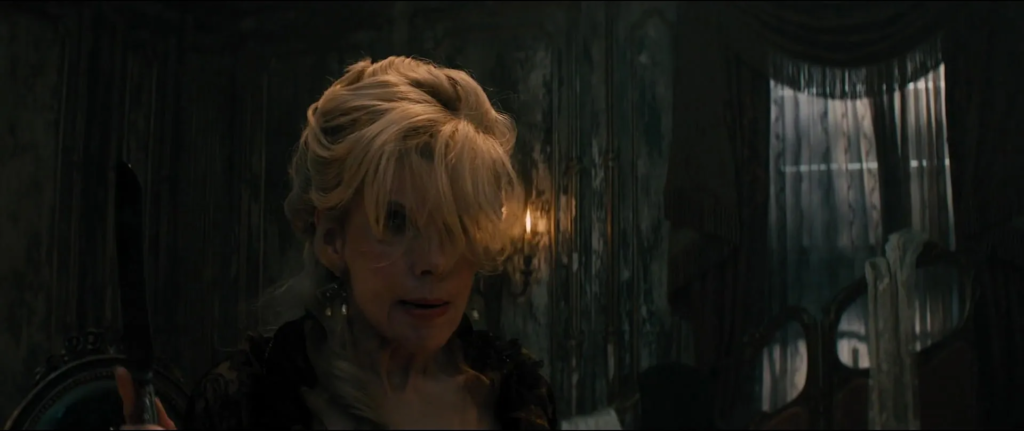
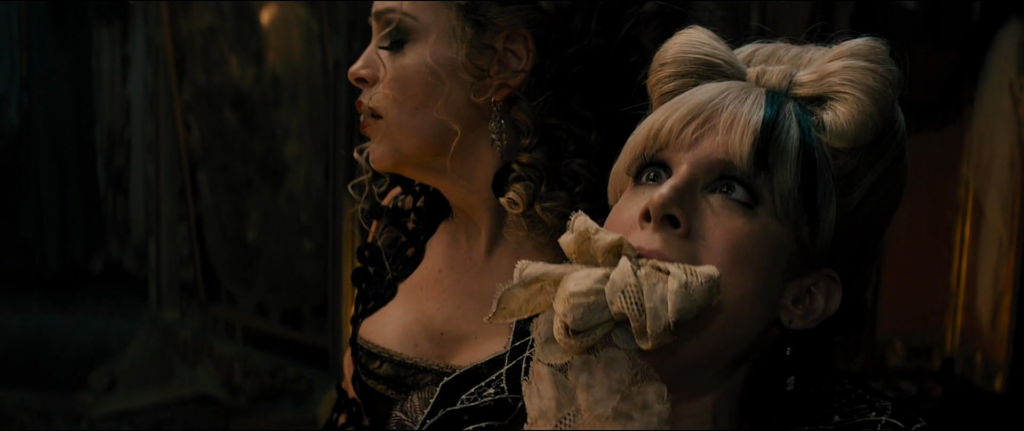
Tracey Ullman is also a lot of fun as Jack’s long-suffering mother.
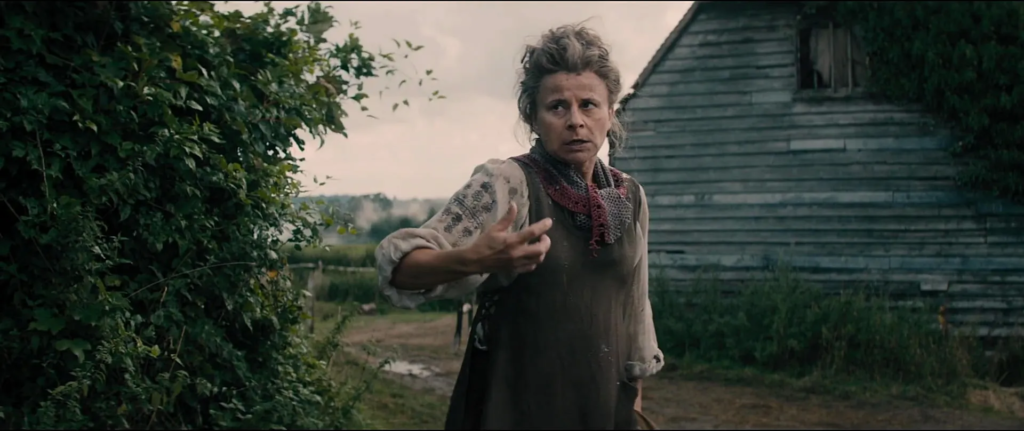
Undervalued character actress Annette Crosbie could have been hilarious as Little Red Riding Hood’s grandmother but, alas, the screenplay cuts her ridiculously bloodthirsty rant from the play, which was one of the few things she had to say in it.
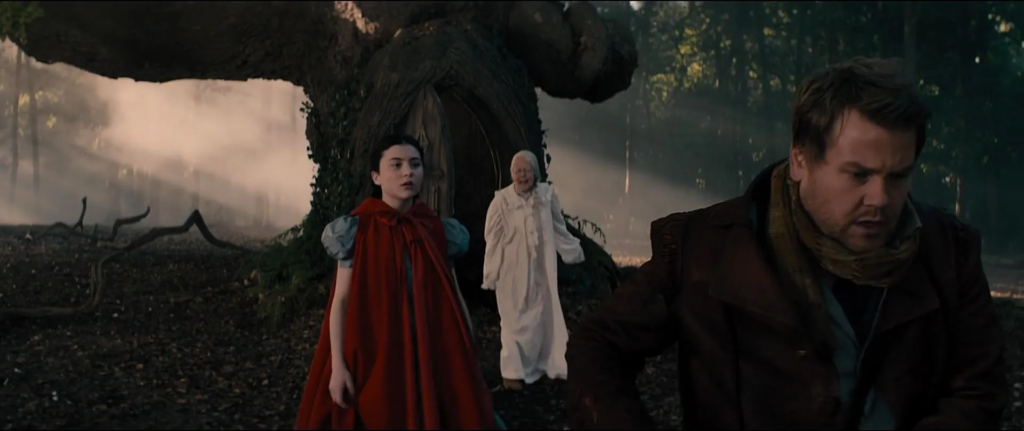
Speaking of Little Red Riding Hood, I remember before the movie’s release, there was some kerfuffle among the Into the Woods fandom about it toning down the sexual undertones of the wolf (Johnny Depp)’s song, Hello Little Girl, about his…hunger for her, in part because of Little Red Riding Hood being played by an actual child rather than an adult or teenager as in your average stage production.[11]Jack’s song about his encounter with the giant’s wife, Giants in the Sky, arguably has sexual innuendo too though it’s much more subtle. All I can say is that if this is the cleaned-up PG version of the scene, I’d be terrified to watch a PG-13 one. I can only imagine it would have shown the wolf visibly masturbating and fantasizing about the child doing a striptease.
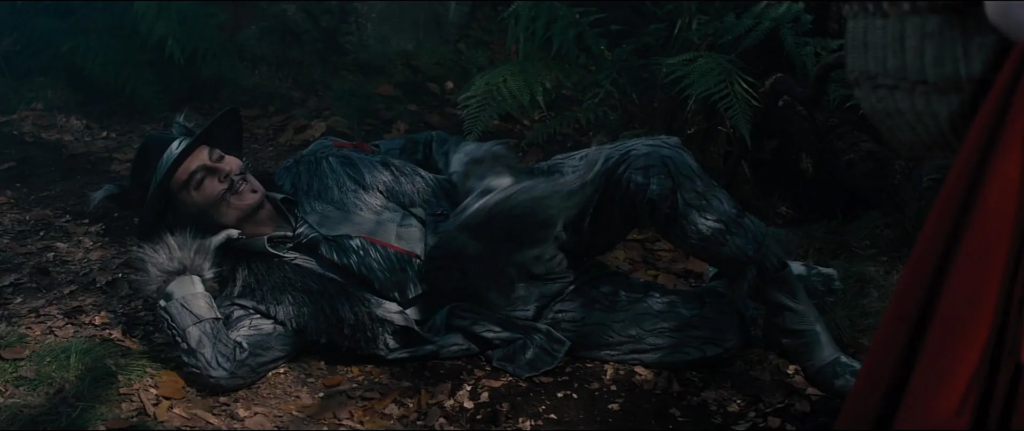
If there’s a weak link in the cast, it’s Anna Kendrick as Cinderella. I regret to say that because she really does make the character likeable with her air of being perpetually unsure of herself. But some of her line readings are ridiculously flat. Late in the movie, she accuses someone of abandoning their child in the same tone you might express incredulity at someone not liking chocolate. And it doesn’t help that she’s the cast member whose vocal part is the biggest stretch for her range.
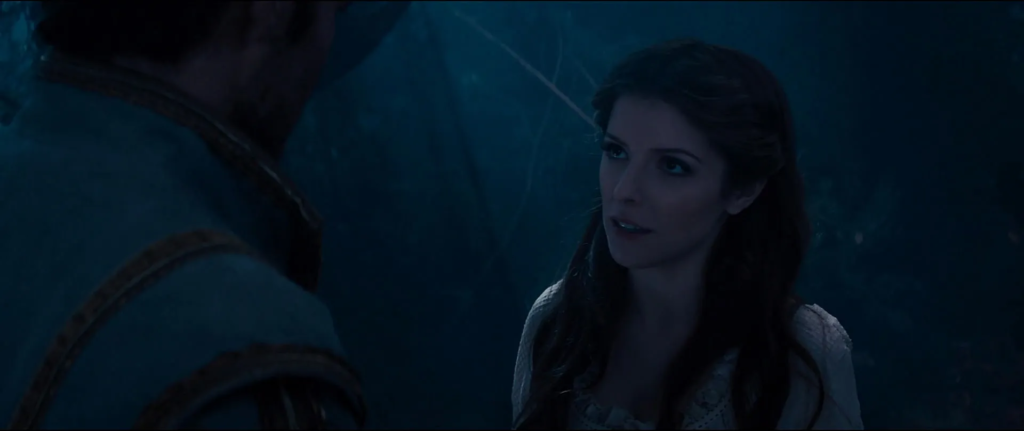
Speaking of music, the movie cuts a handful of songs from the stage musical for time. In my opinion, few of the deleted songs were the best ones and as it is, the film still has a musical number every couple of scenes, but I understand why this is disappointing for fans of the material. I do feel that cutting one particular song really winds up benefiting the movie though. Toward the climax of the play, the baker, devastated by recent events, sings the sad song, No More. In the equivalent scene of the film, he simply breaks down crying. (The tune for the song can still be heard as background music.) We’ve had a lot of scenes prior to this of characters singing about their feelings. This is the first time we see one of them be realistically overwhelmed by their emotions and break down crying. For me, it’s the movie’s most powerful moment.
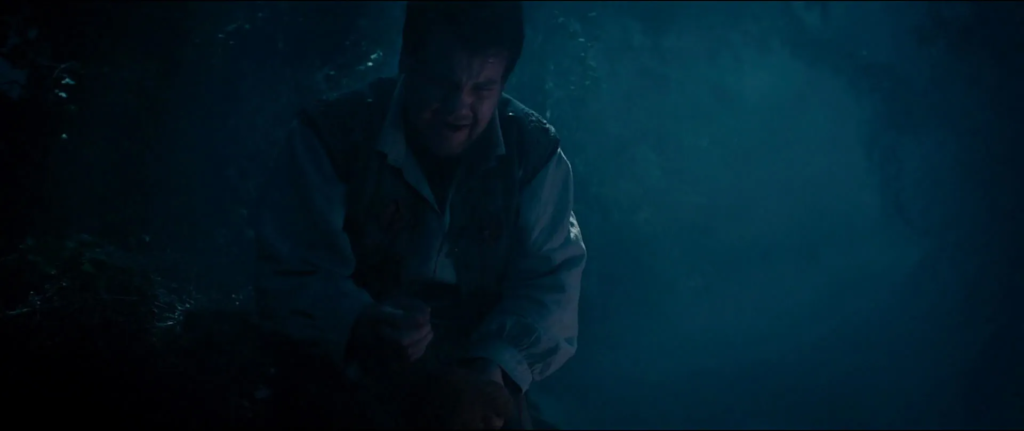
I’d like to conclude this post by hearkening back to one of my favorite things I’ve written on this blog, a series on Maleficent, another Disney movie from 2014 that sought to subvert fairy tales, making them more morally complex and adult than they are usually perceived as being.[12]Of course, that movie was trying to do that to a Disney fairy tale while Into the Woods does it for three fairy tales by the Brothers Grimm and one by Joseph Jacobs. I wrote of that movie’s rape metaphor that “the movie doesn’t really have anything to say about the reality of rape, beyond that it’s bad, or the psychology of rapists or rape victims. It just feels like the filmmakers trying to prove that just because they’re making a Disney movie it doesn’t mean they’re not edgy.” Into the Woods, on the other hand, does have something to say about abuse, adultery, abandonment and inherited trauma or if it doesn’t, at least it comes across as genuinely pained by them enough to put them in the forefront of the story. It doesn’t use them as a trite villain backstory to score brownie points for social relevance. And it also has the guts to follow through on its aspirations of a gray vs. gray conflict to the very end unlike Malefiecent, which ends with a clear villain falling to their demise and the clear heroes triumphant as in a traditional Disney movie. Viewed as an adaptation of the stage play, this movie is questionable but viewed as a superior alternative to Maleficent, what Maleficent should have been[13]If, indeed, Maleficent should have been at all., it excels. Rob Marshall has said in interviews that he intended the story to resonate with what Americans felt in the wake of the terrorist attacks on September 11, 2001, with a sudden threat from seemingly out of nowhere and everyone unsure of how to handle it. I remember rewatching the movie after the attacks on the Eiffel Tower in 2015 and thinking, “yeah, that makes sense.”
I’m not sure to whom I can recommend the movie version of Into the Woods but I do know I enjoy it myself. It’s messy and full of uncomfortable compromises but ultimately worthwhile. Hey, that’s a good summary of Into the Woods‘s depiction of life in general.
References
| ↑1 | To its credit, the marketing campaign didn’t try to deceive family audiences quite as much as it could have tried. The second trailer all but states that adultery will figure into the plot. In fact, the trailer nicely parallels the movie with a first half promising a lighthearted humorous take on fairy tales and a more ominous and dramatic second half. |
|---|---|
| ↑2 | Then again, I can remember being disappointed as a kid whenever there was a fairy tale adaptation that was too adult in content for me to watch, so I guess I can see both sides. |
| ↑3 | The dialogue never identifies her by name but she’s obviously Little Red Riding Hood. |
| ↑4 | Most Cinderella adaptations cut the character for the same reason. |
| ↑5 | Though the cautiously optimistic ending suggests humanity can learn from its mistakes-future generations of it anyway. |
| ↑6 | They also symbolize people who always want what they can’t have. |
| ↑7 | The compressed time frame also does that though that feels like a side effect of not being able to make a three-hour movie rather than a goal of the filmmakers. |
| ↑8 | The film does the same thing with another character’s death. The dialogue is weirdly inconsistent here, using euphemisms for death is some scenes and throwing the word around casually in others. |
| ↑9 | As the prince is a sympathetic character who really loves Rapunzel in this version, such a scene could have been even sadder than the one in the play where it was only the witch who really mourned for her. Then again, you could argue that part of Rapunzel’s tragedy in the original stage version was that only one person really knew her and cared about her. |
| ↑10 | Punch has played versions of Cinderella’s stepsister twice before. It’s kind of her thing. |
| ↑11 | Jack’s song about his encounter with the giant’s wife, Giants in the Sky, arguably has sexual innuendo too though it’s much more subtle. |
| ↑12 | Of course, that movie was trying to do that to a Disney fairy tale while Into the Woods does it for three fairy tales by the Brothers Grimm and one by Joseph Jacobs. |
| ↑13 | If, indeed, Maleficent should have been at all. |
